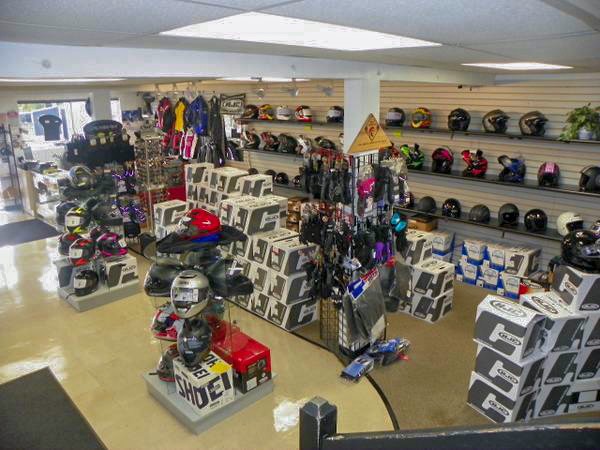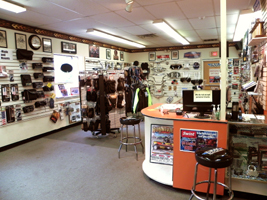Store the Best MX Parts NZ for Your High-Performance Bike
Store the Best MX Parts NZ for Your High-Performance Bike
Blog Article
Recognizing the Important Parts of a Bike: A Comprehensive Overview for Lovers
For motorbike lovers wanting to raise their riding experience and guarantee their bikes run smoothly, understanding the essential components of a bike is vital. Each element, from the engine's elaborate workings to the vital duty of the stopping mechanisms, not just impacts efficiency however likewise safety and convenience. This guide will certainly walk through the basic components that every motorcyclist must be familiar with, allowing notified choices in both maintenance and possible upgrades. As we begin this exploration, one must ask: how does each part connect to produce the seamless ride every enthusiast looks for?
Engine Elements

The camshaft plays an essential duty in controlling the timing of the engine's shutoffs, guaranteeing the specific opening and closing required for reliable fuel and air consumption, in addition to exhaust expulsion. This timing is crucial to keeping ideal engine efficiency and efficiency. In addition, the carburetor or fuel shot system, relying on the motorcycle version, is liable for mixing air with fuel in the proper proportion for combustion.
The cooling system, either air or liquid-based, works to maintain the engine's temperature within functional limits, stopping getting too hot and making sure long life - motox parts nz. Each component, thoroughly designed and integrated, adds to the smooth operation of the engine, defining the motorcycle's power outcome and overall performance
Transmission System
Important to the bike's functionality, the transmission system guarantees effective power transfer from the engine to the wheels. This system makes up a number of critical components, including the clutch, gearbox, and final drive, each playing an important duty in converting the engine's power right into movement. The clutch, usually run by a hand lever, offers to disengage the engine and engage from the transmission, permitting for smooth equipment changes and regulated acceleration.
The gearbox, typically described as the transmission appropriate, consists of a collection of gears that bikers can manually change via to change the bike's rate and torque result. These equipments are set up in a sequence that enables the motorcycle to increase efficiently and preserve optimal engine efficiency throughout different speeds. Many motorcycles utilize a consecutive transmission, needing the biker to shift gears in an established order.
Braking Systems
While understanding the transmission system is crucial to harnessing a motorcycle's power, equally important is the capacity to manage and quit that power effectively, which is where braking systems enter play. Brakes are important for security and performance, giving the cyclist with the required control to navigate different terrains and problems. Normally, motorcycles include two sorts of stopping systems: disc brakes and drum brakes.
Disc brakes are more widespread in modern-day bikes due to their premium efficiency. This system provides much better warmth dissipation, consistent efficiency, and enhanced quiting power, especially in wet problems.
Alternatively, drum brakes, though much less common, are still located in some bikes. They work by pushing brake shoes versus the inner surface area of a drum affixed to the wheel. While generally much less efficient in heat dissipation and quiting power, drum brakes are less complex and more cost-efficient.
Recognizing these braking systems' nuances enables motorcyclists to keep their bikes correctly and value the design that makes certain safe and effective stopping.
Suspension and Guiding
Suspension and steering systems are important elements that dramatically affect a bike's handling and ride convenience. The shock absorber, being composed of forks at the front and shock absorbers at the rear, absorbs road abnormalities, enhancing security and control. Front forks, usually telescopic or upside down, why not try this out compress and rebound to alleviate effects, while rear shock absorbers preserve tire call with the road, important for grip and safety and security.
Steering, centered around the handlebars, connects the cyclist to the motorcycle's directional control. The guiding head bearings make certain smooth operation, permitting specific maneuverability. Appropriate placement and upkeep of these bearings are crucial for predictable steering action and lowering cyclist exhaustion.
The suspension's adjustability is another critical aspect; preload, damping, and rebound setups permit modification to fit different riding styles and problems. This versatility is vital for optimizing efficiency, whether navigating urban roads or dealing with rugged routes. Advancements like electronic shock absorber provide real-time modifications, boosting experience top quality throughout varied terrains.

Electrical Equipments
After guaranteeing a controlled and smooth adventure via reliable suspension and steering systems, interest transforms to the electrical systems, a pivotal facet of contemporary motorcycles. These systems play an important role not just in starting the engine however additionally in powering various elements that boost the functionality and safety and security of the motorcycle.
At the heart of a motorbike's electric system is the battery, which shops electrical power required for beginning the engine and powering supporting systems - mx gear nz. The generator or generator, coupled with the rectifier-regulator, guarantees the battery continues to be charged while the bike functions, converting power right into electric power and preserving voltage degrees
The ignition system, an additional vital part, is accountable for stiring up the air-fuel combination in the engine's cylinders. Modern motorcycles commonly make use of a digital ignition system, providing higher performance and integrity compared to standard systems.
Lights systems, including headlights, tail lights, and signs, are likewise essential, guaranteeing exposure and security for the motorcyclist. Extra digital parts such as sensing units, control devices, and presents add to innovative attributes like gas shot monitoring, anti-lock stopping systems (ABS), and digital control panels, better enhancing the riding experience.
Conclusion
A complete understanding of a motorcycle's necessary elements, consisting of the engine, transmission system, braking mechanisms, suspension, steering, and electrical systems, is vital for lovers intending to maximize safety and security, convenience, and efficiency. Mastery of these aspects enables educated choices pertaining to upkeep and upgrades, eventually boosting the riding experience. By browse around here integrating this understanding, riders can guarantee their bikes operate at peak performance and reliability, consequently taking full advantage of both enjoyment and durability of their official source vehicles.
For motorbike fanatics looking to raise their riding experience and ensure their bikes run smoothly, recognizing the vital components of a motorbike is extremely important.Indispensable to the motorcycle's capability, the transmission system makes sure effective power transfer from the engine to the wheels.While comprehending the transmission system is crucial to taking advantage of a motorcycle's power, just as essential is the capacity to manage and stop that power efficiently, which is where stopping mechanisms come into play. Normally, bikes include two types of braking systems: disc brakes and drum brakes.
A detailed comprehension of a motorcycle's important elements, including the engine, transmission system, braking systems, suspension, guiding, and electric systems, is vital for fanatics intending to optimize comfort, safety, and efficiency.
Report this page